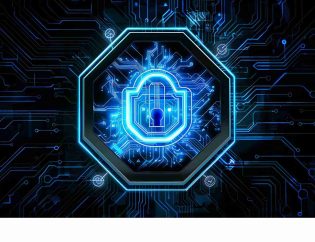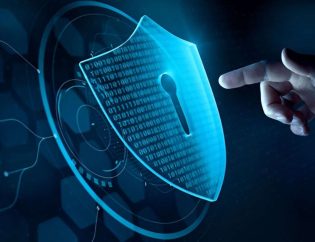
In today’s fast-paced digital world, businesses are constantly under threat from increasingly sophisticated cyberattacks. Traditional security tools like firewalls, antivirus software and basic endpoint protection are no longer enough to defend against these evolving threats. To tackle this growing challenge, organizations need a more advanced, integrated approach to security — Managed Extended Detection and Response (XDR).
Managed XDR is a powerful solution that unifies multiple security tools into a single system, offering complete protection across all parts of a business’s IT infrastructure. This holistic approach not only improves visibility but also strengthens the organization’s ability to detect and respond to potential threats in real-time.
In this blog, we will explore what Managed XDR is, how it works, its benefits, key capabilities and what organizations should consider when choosing an XDR solution.
What is Managed XDR?
Managed XDR (Extended Detection and Response) is a powerful cybersecurity service that brings together several key security functions, like Endpoint Detection and Response (EDR), Network Traffic Analysis (NTA) and Security Information and Event Management (SIEM), all into one unified platform. By pulling data from various sources—such as endpoints, servers, cloud applications and networks— XDR offers complete protection against a wide range of threats. This integrated approach helps detect security issues more effectively and respond to potential breaches much faster.
What sets Managed XDR apart is the “managed” aspect, which means a dedicated team of security experts actively monitors and manages the XDR platform. Often, this service is provided by a third-party specialist like Hyper Secure. This gives businesses access to top-tier threat detection and response capabilities without the need to maintain a full-time, in-house Security Operations Center (SOC), making it both efficient and cost-effective.
Managed XDR (Extended Detection and Response) for IT and cloud environments combines data from various sources, like computers, networks and cloud services, to help organizations quickly identify and respond to potential risks. With advanced tools and continuous monitoring, it reduces security blind spots and simplifies operations, ensuring strong protection for both on-site systems and cloud assets. This allows businesses to enhance their security without managing multiple tools, enabling them to focus on what they do best.
What Does XDR Do ?
XDR, or Extended Detection and Response, is a security solution that integrates various security tools and data sources. It helps organizations detect, investigate and respond to cyber threats more effectively. By providing a unified view of security incidents, XDR enhances threat detection and streamlines response efforts across different environments.
XDR stands for Extended Detection and Response. It combines security tools to improve threat detection, investigation and response, offering a comprehensive view of incidents to protect organizations from cyber threats.
What Are the Benefits of XDR?
Managed XDR offers numerous benefits for businesses, making it a compelling choice for modern cybersecurity needs:
Comprehensive Threat Detection
XDR provides full-spectrum visibility by integrating data from various parts of the IT environment, including endpoints, cloud services and networks. This comprehensive approach ensures that threats are detected at every stage of the attack lifecycle, from initial intrusion to lateral movement across the network.
Faster Response Times
With automated threat detection and response capabilities, XDR drastically reduces the time it takes to respond to incidents. For example, if the platform detects ransomware on an endpoint, it can automatically isolate that device to prevent further spread, mitigating damage before it escalates.
Reduced Alert Fatigue
Traditional security systems often produce a high volume of alerts, many of which turn out to be false positives. XDR’s ability to correlate alerts from multiple sources significantly reduces false positives, allowing security teams to focus on legitimate threats rather than being overwhelmed by unnecessary alerts.
Cost Efficiency
For many businesses, managing an in-house security team and the array of tools needed for comprehensive threat detection can be costly. Managed XDR offers a cost-effective solution by outsourcing the monitoring and management of security operations to a specialized provider, saving businesses the expense of hiring, training and retaining a full-time cybersecurity staff.
Proactive Threat Hunting
Managed XDR goes beyond reactive security measures by incorporating proactive threat hunting. Security experts actively look for hidden threats and vulnerabilities within the system, identifying risks that may not yet have triggered an alert. This proactive approach helps to mitigate risks before they escalate into larger security incidents.
What Are Key XDR Capabilities?
Several core capabilities make XDR a powerful tool for threat detection and response. These include:
Cross-Layered Threat Detection
One of the key strengths of XDR is its ability to connect and analyze data from different security layers. Whether the threat comes from an endpoint, a network, or a cloud application, XDR gathers these signals to provide a clearer view of the attack. This leads to improved detection of complex, multi-step attacks that might otherwise slip through unnoticed.
Automated Response
XDR’s automation features enable it to respond quickly to identified threats. In many cases, the platform can take immediate actions—such as isolating a compromised endpoint or blocking a malicious IP address—without the need for human intervention. This automation reduces the window of opportunity for attackers to cause significant damage.
Advanced Analytics and AI
By using AI and machine learning, Managed XDR can identify advanced threats that often slip past traditional detection methods. These technologies enhance the platform’s ability to recognize new risks, continuously improving its effectiveness by learning from evolving data patterns and behaviors. This makes it a powerful tool for staying ahead of emerging threats.
24/7 Monitoring and Support
Managed XDR services offer continuous monitoring to ensure that threats are detected and addressed around the clock. This is crucial in today’s cyber environment, where attacks can happen at any time, including outside regular business hours.
Integration with Existing Tools
XDR platforms are designed to work with existing security tools, enhancing their effectiveness by providing broader context and deeper analysis. This ensures that organizations can get the most out of their current security investments without needing to replace their entire security stack.
What To Look For in an XDR Solution?
When choosing an XDR solution for your organization, there are several factors to consider to ensure that it meets your specific security needs.
Scalability
As your business grows, your security needs will also evolve. It’s important to choose an XDR solution that can scale with your organization, handling increasing data volumes and more complex security threats without compromising performance.
Ease of Integration
The best XDR solutions integrate seamlessly with your existing security tools and infrastructure. Look for a solution that can easily incorporate data from your current EDR, SIEM and other security systems to provide a unified view of your environment.
Automation Capabilities
Automation is critical for reducing the time between threat detection and response. Ensure that the XDR platform you choose offers robust automation features, such as automatic containment, remediation and alert correlation, to reduce the need for manual intervention.
Expert Management
Managed XDR solutions should come with a team of dedicated security professionals who offer 24/7 monitoring and expert incident response. It’s important to choose an XDR provider with the right expertise and resources to ensure your organization is fully protected.
Strategies for Maximizing XDR Effectiveness
Proactive Threat Hunting
Don’t rely solely on automated detection tools. Regular threat hunting should be part of your XDR strategy to identify risks that haven’t yet triggered an alert. This proactive approach can prevent small issues from becoming major security incidents.
Regular Optimization
To keep your XDR platform running smoothly, it’s important to regularly review and update detection rules. Additionally, integrating new threat intelligence feeds and adjusting response workflows as threats evolve will help. By taking these steps, your security system stays strong and adapts to new and emerging cyber risks, providing continuous protection.
Incident Response Planning
Having a solid incident response plan is crucial for maximizing your XDR solution. First, define clear procedures for how your team will manage different types of incidents. Then, ensure your XDR solution fits these workflows, so everyone knows their role when an issue comes up. This alignment leads to faster, more effective threat responses.
Training and Awareness
Ensure your staff is trained in cybersecurity best practices, including recognizing phishing attempts and other forms of social engineering. Even with the most advanced XDR platform, human error can still be a weak point in your security defenses.
What is XDR in Cybersecurity
Managed XDR is a modern cybersecurity strategy that centralizes threat detection and response across an organization. By integrating data from multiple security tools, XDR provides comprehensive visibility, enabling faster identification of attacks and a more coordinated response to security incidents, ultimately enhancing overall security posture.
XDR, or Extended Detection and Response, consolidates threat detection from various security tools, providing a unified view of threats. This enables quicker identification and response to cyber incidents, improving overall security.
Customer Testimonial
“Our company faced continuous cyberattacks, which were damaging our infrastructure. After implementing Managed XDR solutions, we saw a 50% reduction in threat response times and achieved complete visibility across our IT environment.” – Tech Solutions Inc.
FAQs
1. What does Managed XDR mean?
Managed XDR stands for Managed Extended Detection and Response, which integrates multiple security tools into a single solution.
2. Why is Managed XDR essential for businesses?
It offers comprehensive protection, automating threat detection and response while providing better visibility.
3. How does Managed XDR protect cloud environments?
Managed XDR solutions secure cloud environments by monitoring and responding to misconfigurations and threats in real-time.
4. What are the benefits of Managed XDR for IT?
Managed XDR for IT ensures reduced response times, integrated tools and continuous threat detection.
5. How does Managed XDR reduce costs?
By consolidating multiple tools into one platform, it reduces overhead costs and increases operational efficiency.
Conclusion
Hyper Secure’s Managed XDR service gives businesses a strong, flexible solution to deal with the growing challenges of cyber threats. By gathering data from different sources and using advanced analytics, it provides better visibility, quicker response times and more accurate threat detection than older security tools. This helps businesses spot and handle threats more easily.
For companies looking to enhance their cybersecurity, Hyper Secure, a leading cybersecurity services company, provides the right tools and expert knowledge to stay ahead of cybercriminals. With Managed XDR Services, businesses can effectively protect their valuable digital assets while maintaining efficiency and security as new threats arise.






